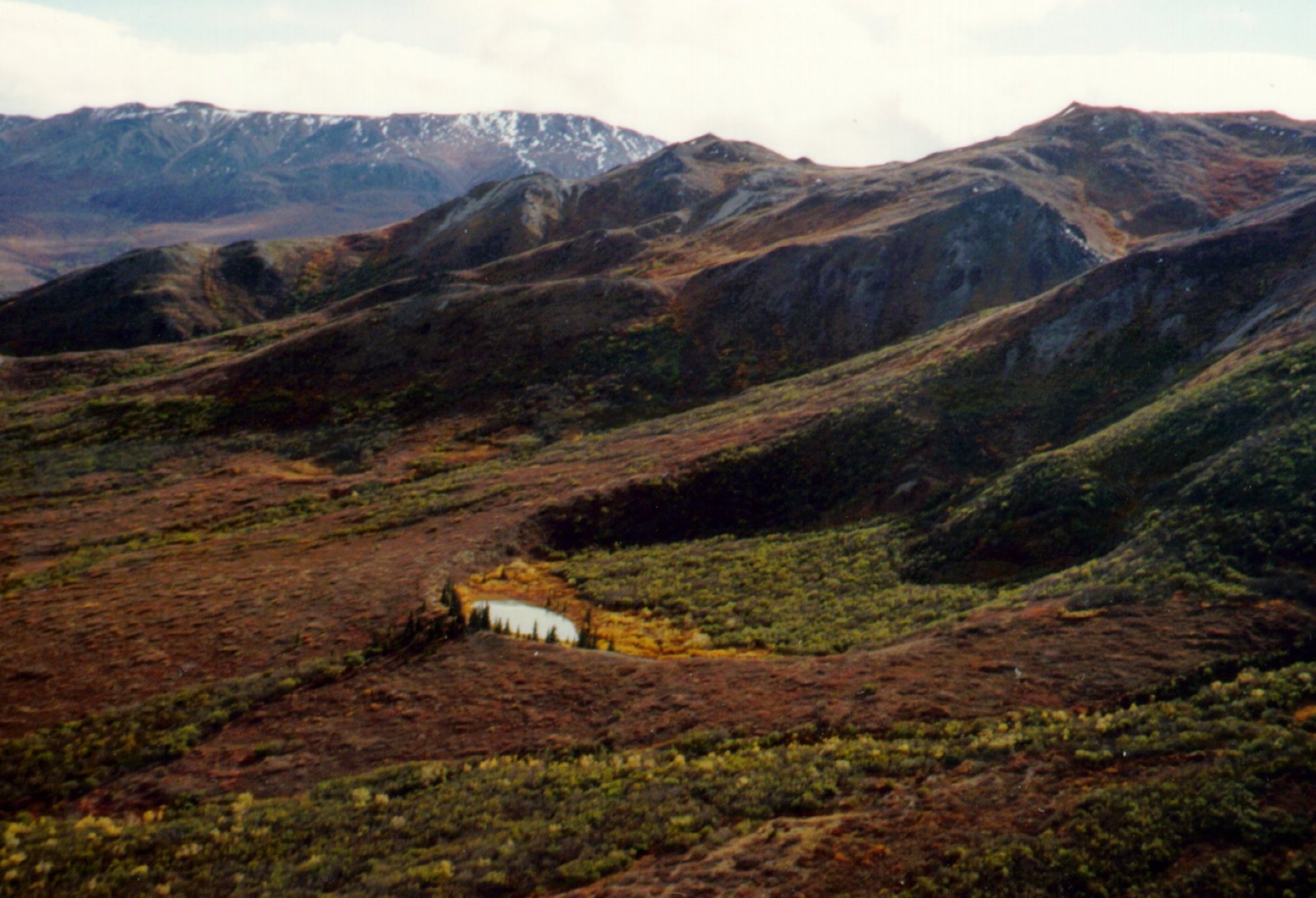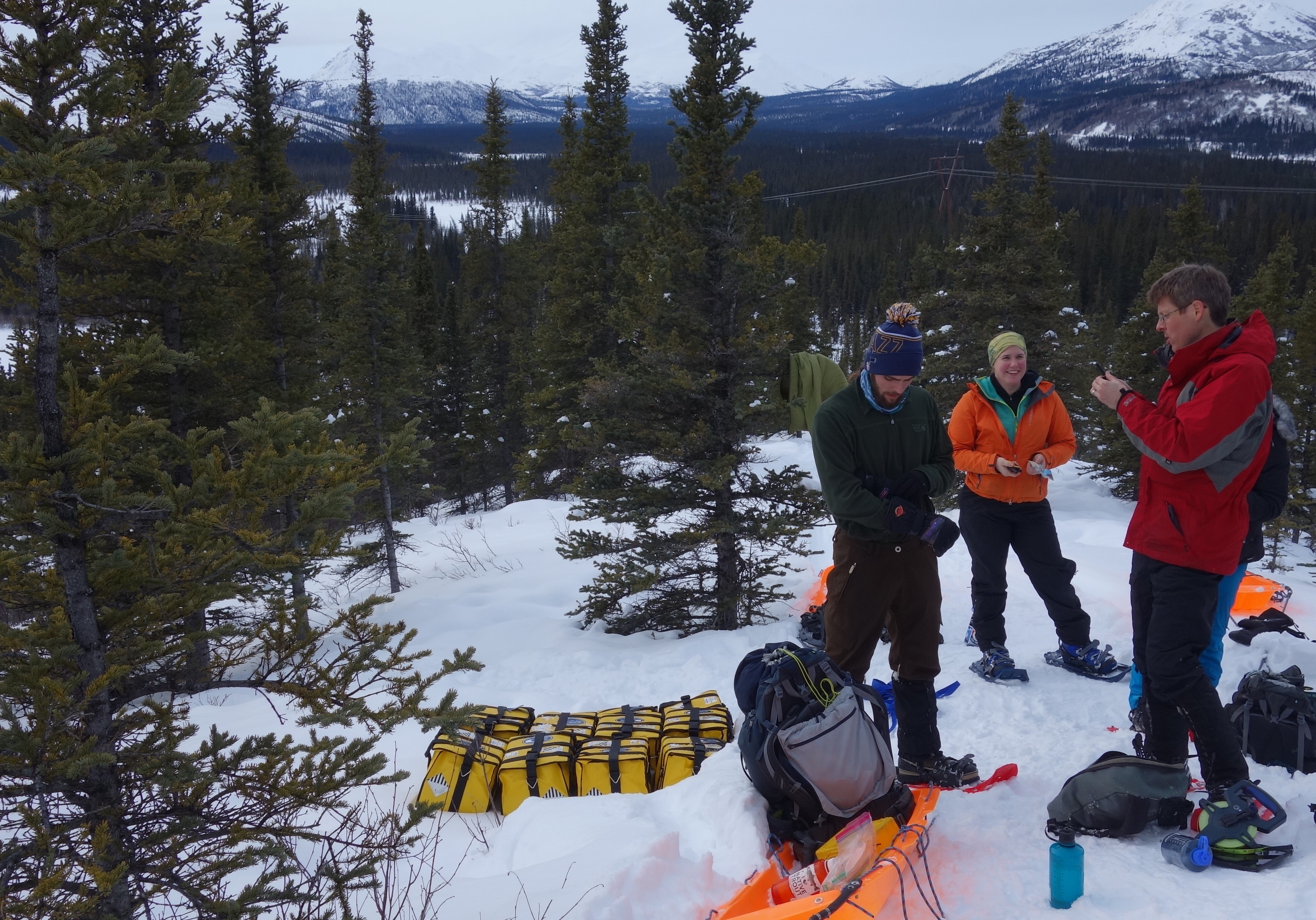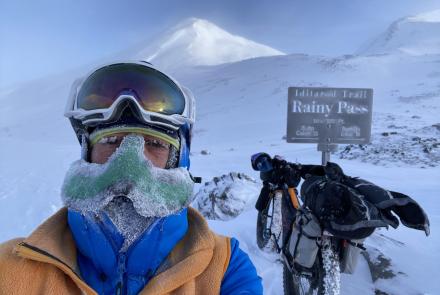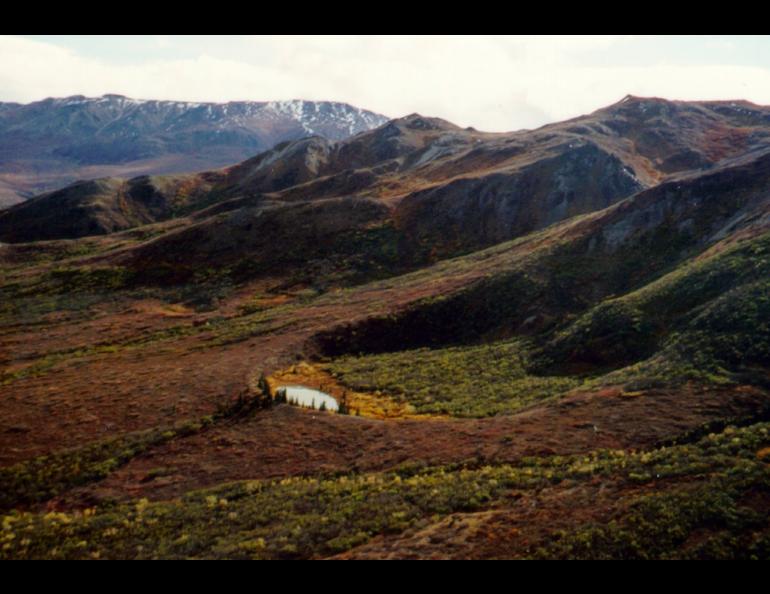
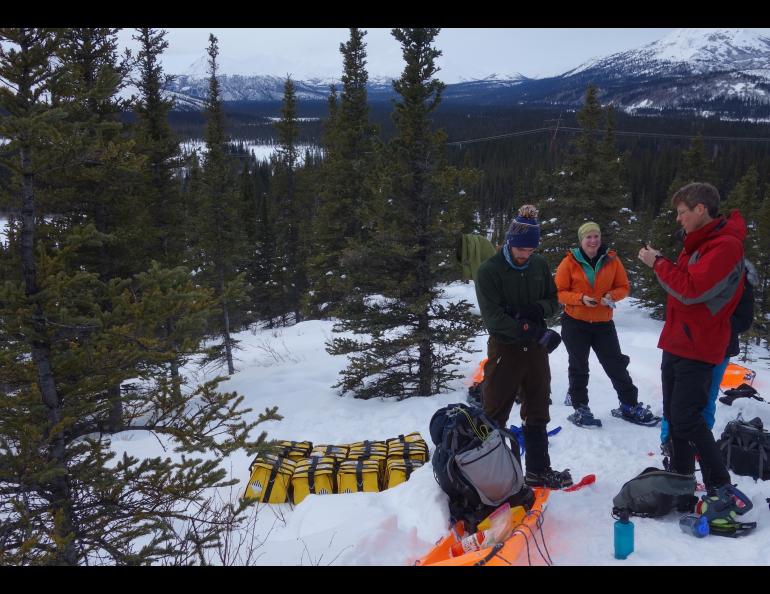
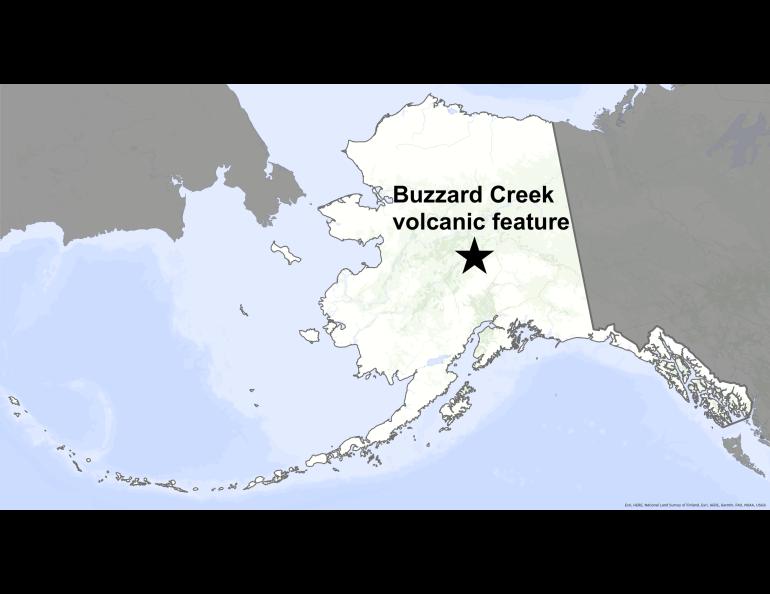
Magma found beneath volcano-less country
For years, scientists have wondered why North America’s highest mountain is not a volcano. All the ingredients for volcanic activity lurk deep beneath Denali, which sits above where one planetary plate grinds past another.
Recently, while looking for something else, researchers found a reservoir of what might be magma, 7 miles beneath the muskeg of middle Alaska.
The spot intrigues Carl Tape because above it, at the ground surface, are ancient volcanic features.
Tape is a seismologist with the University of Alaska Fairbanks Geophysical Institute. A few years ago, he headed a team that peppered seismic instruments along the Parks Highway and on the Denali seismic fault. They installed hundreds of seismometers at spots along the road and dozens more right on the fault.
While looking at the seismometer data, which revealed ground motions large and small, Tape and his colleagues noticed a spot where earthen waves slowed down as they passed through.
“Sometimes a slowdown is due to sediments, such as those in the Tanana (River) valley,” he said. “Sometimes it’s due to magma. This one is beneath the Buzzard Creek maars.”
The Buzzard Creek maars are two vegetated craters northeast of Healy. They formed when molten rock rose to the water table and blew up about 3,000 years ago. Geologists have found rocks around Buzzard Creek with the same chemical signature as Aleutian volcanoes.
Those volcanic features near Healy are within a region scientists have named the “Denali Volcanic Gap.” The gap is a puzzling absence of volcanoes from Mount Spurr (across Cook Inlet from Anchorage) to the Wrangell Mountains in eastern Alaska.
Volcanic activity of the Aleutian Islands seems to end at Mount Spurr, but if the curve of the Aleutian Arc were to extend north it would intersect the Alaska Range.
Other conditions there are favorable for volcanoes, too: Most of the Aleutians are located about 60 miles above where the slab of the Pacific plate plunges beneath the North American plate. The Buzzard Creek craters and the mountains of the Alaska Range (including Denali) are located about 60 miles above the interface of the giant plates.
University of Utah student Santiago Rabade pored over subtle signals picked up by the dense network temporary seismometers Tape and his team had set up quickly in February 2019. Then, they performed rare winter fieldwork to detect aftershocks from a 7.0 Anchorage earthquake on Nov. 30, 2018.
The earthen hum generated by ocean waves disturbing the sea floor is a constant source of noise we can’t feel but seismometers can; that signal allowed the scientists to detect the patch of magma beneath the Buzzard Creek craters.
“We had zero plan to look for what we found,” Tape said. “It’s fun to find results when you don’t seek them. And it’s generally better science.”
A next logical step to discover more about the mystery magma spot would be to cluster seismic instruments directly above it. Tape is hoping his team’s recent paper will inspire someone to take a closer look at the red blob that might help solve the riddle of the Denali Volcanic Gap.

